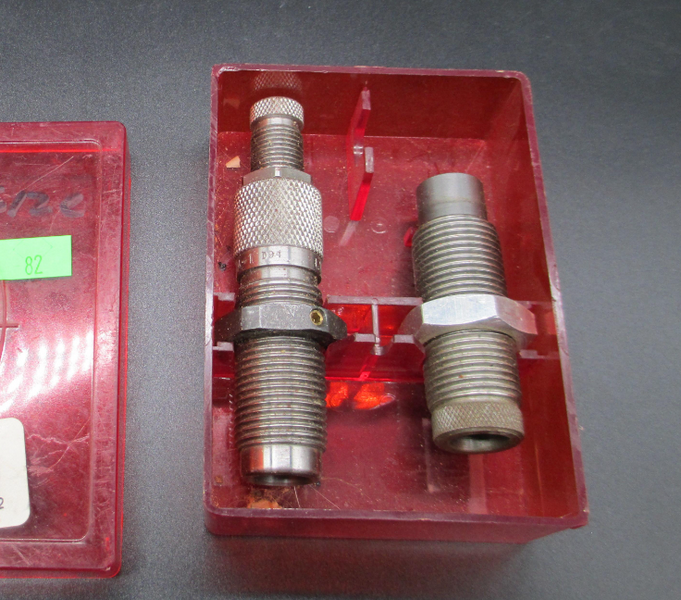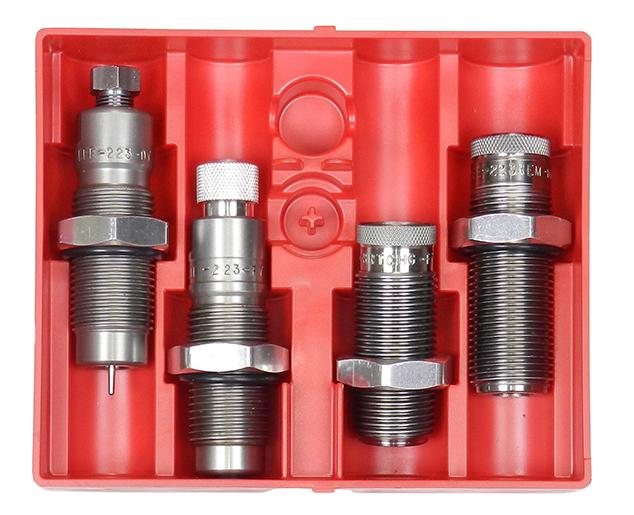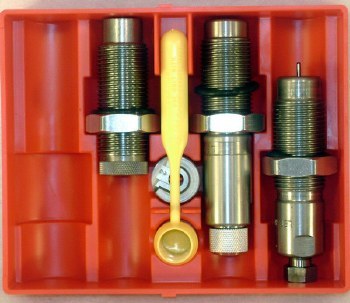Content Menu
● Introduction
● Understanding Reloading Dies
● Features of Lee 223 Carbide Reloading Dies
● Advantages of Using Lee 223 Carbide Reloading Dies
● Step-by-Step Guide to Reloading with Lee 223 Dies
>> Preparing the Workspace and Materials
>> Detailed Reloading Process Using Lee 223 Carbide Dies
>> Safety Tips and Best Practices
● Common Issues and Troubleshooting
● Conclusion
● Related Questions
>> Q1. What are the benefits of using carbide dies over steel dies?
>> Q2. How often should I clean my reloading dies?
>> Q3. Can I use Lee 223 Carbide Dies for other calibers?
>> Q4. What is the importance of crimping in reloading?
>> Q5. How can I ensure the accuracy of my reloads?
Introduction
Reloading ammunition is a practice that has gained popularity among shooting enthusiasts and hunters alike. It allows individuals to customize their ammunition to suit their specific needs, whether for target shooting, hunting, or competitive shooting. Among the various tools available for reloading, reloading dies play a crucial role in the process. One of the most respected names in the reloading community is Lee Precision, known for its high-quality and affordable reloading equipment. This article will delve into the Lee 223 Carbide Reloading Dies, exploring their features, advantages, and the reloading process itself.
Understanding Reloading Dies
Reloading dies are essential tools used in the ammunition reloading process. They are designed to shape and size the brass casings, seat bullets, and crimp the finished cartridges. There are several types of reloading dies, each serving a specific purpose:
- Full Length Sizing Dies: These dies resize the entire length of the brass casing, ensuring it fits properly in the chamber of the firearm. This is particularly important for bottleneck cartridges like the .223 Remington.
- Neck Sizing Dies: These dies only resize the neck of the casing, which can help maintain the fit of the brass in the chamber, leading to improved accuracy. However, they are best used with brass that has been fired in the same chamber.
- Bullet Seating Dies: These dies are used to seat the bullet into the casing at the desired depth, ensuring consistent performance and accuracy.

Features of Lee 223 Carbide Reloading Dies
The Lee 223 Carbide Die Set is specifically designed for reloading .223 Remington cartridges, a popular choice among rifle shooters. This die set includes several components that make the reloading process efficient and effective:
- Full Length Sizing Die: This die is made from carbide, which is more durable than traditional steel dies. It allows for smoother resizing and reduces the need for lubrication, making the process cleaner and faster.
- Bullet Seating Die: This die is designed to seat bullets accurately and consistently. It features an adjustable seating depth, allowing reloaders to customize their ammunition to their specific needs.
- Factory Crimp Die: This die provides a crimping function that ensures the bullet is securely held in place within the casing. This is particularly important for semi-automatic firearms, where recoil can cause bullets to shift.
- Durable Construction: The carbide material used in the Lee 223 dies ensures longevity and resistance to wear, making them a worthwhile investment for any reloader.
Advantages of Using Lee 223 Carbide Reloading Dies
Using Lee 223 Carbide Reloading Dies offers several advantages that can enhance the reloading experience:
- Enhanced Durability: Carbide dies are known for their strength and resistance to wear. This means they can withstand the rigors of frequent use without losing their effectiveness.
- Improved Accuracy: The precision engineering of Lee dies ensures that each round is sized and seated consistently, leading to improved accuracy in shooting. This is particularly important for competitive shooters who rely on tight groupings.
- Ease of Use: Lee dies are designed with the user in mind. The straightforward setup and operation make them accessible for both beginners and experienced reloaders.
- Reduced Maintenance: Unlike steel dies, carbide dies do not require lubrication for resizing, which simplifies the reloading process and reduces cleanup time.

Step-by-Step Guide to Reloading with Lee 223 Dies
Reloading with Lee 223 Carbide Dies can be a rewarding experience. Here's a step-by-step guide to help you through the process:
Preparing the Workspace and Materials
Before you begin reloading, it's essential to set up a clean and organized workspace. Gather the following materials:
- Lee 223 Carbide Die Set
- Brass casings (once-fired or cleaned)
- Bullets
- Powder
- Reloading press
- Scale for measuring powder
- Safety glasses and hearing protection
Detailed Reloading Process Using Lee 223 Carbide Dies
1. Clean the Brass: Start by cleaning your brass casings to remove any dirt or debris. This can be done using a tumbler or ultrasonic cleaner.
2. Resize the Brass: Install the Full Length Sizing Die in your reloading press. Adjust the die according to the manufacturer's instructions. Insert the brass casing into the die and operate the press to resize the casing. Repeat this for all casings.
3. Trim the Brass (if necessary): After resizing, check the length of the brass. If it exceeds the maximum length specified for .223 Remington, trim it to the correct length using a case trimmer.
4. Prime the Casings: Use a priming tool to insert new primers into the resized casings. Ensure that the primers are seated correctly.
5. Measure and Add Powder: Using a scale, measure the appropriate amount of powder for your load. Carefully pour the powder into each casing, ensuring consistency across all rounds.
6. Seat the Bullets: Install the Bullet Seating Die in your press. Adjust the die to the desired seating depth. Insert a bullet into the casing and operate the press to seat the bullet securely.
7. Crimp the Rounds: If using a Factory Crimp Die, install it in your press and adjust it as needed. Run the completed rounds through the crimp die to ensure the bullets are securely held in place.
8. Inspect the Finished Rounds: After reloading, inspect each round for any defects, such as improper seating or crimping. This step is crucial for ensuring safety and reliability.
Safety Tips and Best Practices
- Always wear safety glasses and hearing protection when reloading.
- Keep your workspace organized and free of distractions.
- Double-check measurements and settings before proceeding to the next step.
- Store powder and primers in a cool, dry place, away from direct sunlight.
Common Issues and Troubleshooting
Even experienced reloaders may encounter issues during the reloading process. Here are some common problems and their solutions:
- Stuck Cases: If a brass casing gets stuck in the sizing die, use a stuck case remover tool to extract it. Ensure that the die is properly adjusted to prevent this issue.
- Inconsistent Bullet Seating: If bullets are not seating consistently, check the adjustment of the Bullet Seating Die. Make sure it is securely tightened and properly set for the desired depth.
- Crimping Issues: If the crimp is too tight or too loose, adjust the Factory Crimp Die accordingly. Test a few rounds to ensure the crimp is secure without damaging the bullet.
- Overcharged or Undercharged Rounds: Always double-check powder measurements. Use a reliable scale and consider using a powder trickler for more precise measurements.
Conclusion
The Lee 223 Carbide Reloading Dies are an excellent choice for anyone looking to reload .223 Remington cartridges. Their durable construction, ease of use, and ability to produce consistent, accurate ammunition make them a valuable addition to any reloader's toolkit. By following the steps outlined in this guide, you can enjoy the benefits of reloading while ensuring safety and precision in your ammunition.

Related Questions
Q1. What are the benefits of using carbide dies over steel dies?
Carbide dies are more durable, require less maintenance, and provide smoother resizing without lubrication, leading to a cleaner reloading process.
Q2. How often should I clean my reloading dies?
It's a good practice to clean your reloading dies after every use to prevent buildup of residue and ensure optimal performance.
Q3. Can I use Lee 223 Carbide Dies for other calibers?
No, the Lee 223 Carbide Dies are specifically designed for .223 Remington cartridges. Using them for other calibers may result in improper sizing and seating.
Q4. What is the importance of crimping in reloading?
Crimping secures the bullet in the casing, preventing it from moving during recoil, which is especially important for semi-automatic firearms.
Q5. How can I ensure the accuracy of my reloads?
To ensure accuracy, use consistent components, measure powder carefully, and maintain proper seating depth for bullets. Regularly inspect your finished rounds for quality.
















